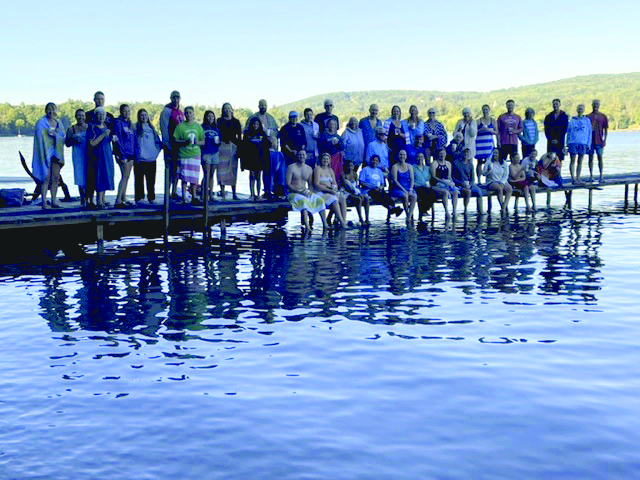Editorial
Parks and Recreation
Last Spring “Our Great National Parks” premiered, to the enthusiastic enjoyment of many of us still in the throes of Covid. The series’ executive producer and narrator is former president Barack Obama who, during his administration, protected more public lands and water than any other U.S. president. The series records the activities of a variety of animals, forests and plants, many formerly endangered, that have emerged, survived and prospered in the wild under the protection of many National Parks around the world: the rhino, Maasai lion, Cape buffalo and elephants in Kenya; lemurs, limestone needles and birds in Madagascar; volcanoes, loggerhead turtles and Erabu flying foxes in Japan; sloths, squirrel monkeys, white-faced monkeys and tiny crabs in Costa Rica; waterfalls, saltwater crocodiles, flatback turtles and coral reefs in Australia; mountain gorillas and golden monkeys in Rwanda; rainforests, orangutans, gibbons and tigers in Indonesia; armadillos, cougars, maras and pumas in Chile/Argentina; blue whales, elephant seals, sea creatures, bears, bison and elk in the U.S.
The United States claims the first National Park — Yellowstone — signed into law as such in 1872 during the presidency of Ulysses S. Grant. Today, there are more than 4,000 National Parks, tributes to a growing passion for and commitment to the protection and conservation of our wild environments. Close to half of these havens have been established within the last 50 years. Sixty-three of them are in the U.S., covering 52.2 million acres in 30 states, American Samoa and the U.S. Virgin Islands. The parks not only nurture an intense amount of life on Earth but exert a major influence over our climate, air and water.
There is no National Park in New York State, but there is Adirondack Park, created a mere 13 years after Yellowstone. Adirondack Park encompasses nearly 6 million acres, roughly the size of Vermont. It is larger than any National Park in the contiguous 48 states — larger, in fact, than Yellowstone, Glacier, Yosemite and the Grand Canyon combined. It contains two counties and significant portions of another four; 61 towns and portions of 28 more; upwards of 2,800 lakes and ponds and 1,500 miles of rivers. Fifty-two percent of the land is privately held, 50,000 acres of which are protected by forest and scenic easements. About 2.7 million acres comprise the Forest Preserve, created in 1892 to be “kept forever as wild forest lands” and designated a National Historic Landmark in 1963. The majority of the Park is undeveloped, and it is a unique treasure of natural resources and physical beauty.
There are parks, too in our own backyard. The Village of Cooperstown owns Fairy Spring, on the east side of Otsego Lake, Three Mile Point, on the west side, and Badger Park, in the Village. They are free to residents and open every day in the summer, with swimming at Three Mile and Fairy Spring. Badger offers basketball and a playground in the summer and skating in the winter; Three Mile lures wintertime fishermen. These parks, along with Council Rock, Lakefront Park and Pioneer Park, are sustained by the Village, with the help of Friends of the Parks, a 501(c)3 that supports these unique public spaces.
For the past eight years, at about this time, Friends has sponsored an Early Bird Swim at Fairy Spring, encouraging brave souls to jump into the refreshing Otsego waters and welcome the coming day. There is a doggie paddle race, refreshments and a trophy or two. Hats off to the Friends for keeping our tiny treasures of natural resources and beauty available to us all. Visit them often and treat them well.


